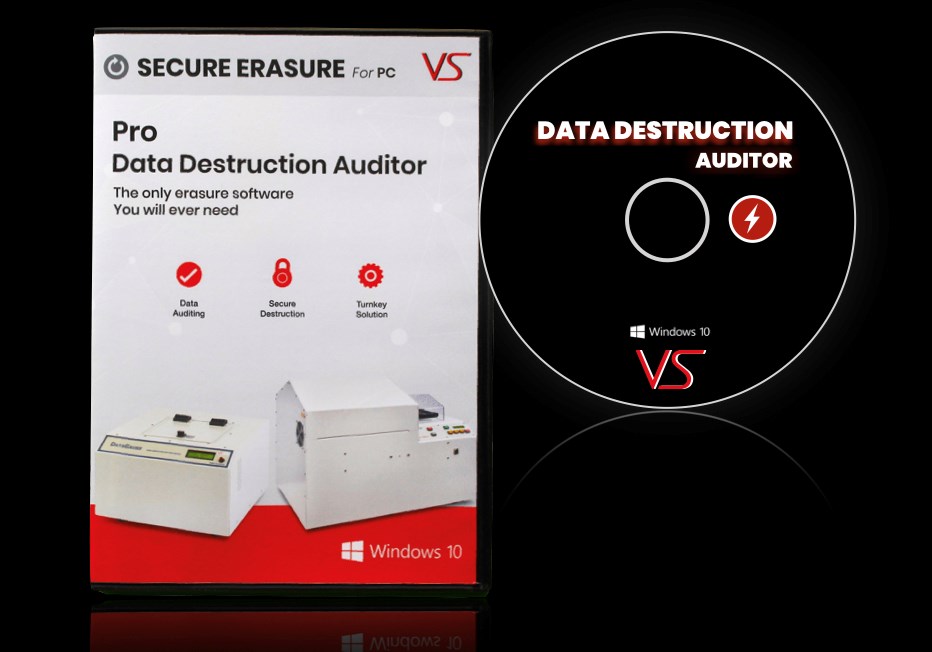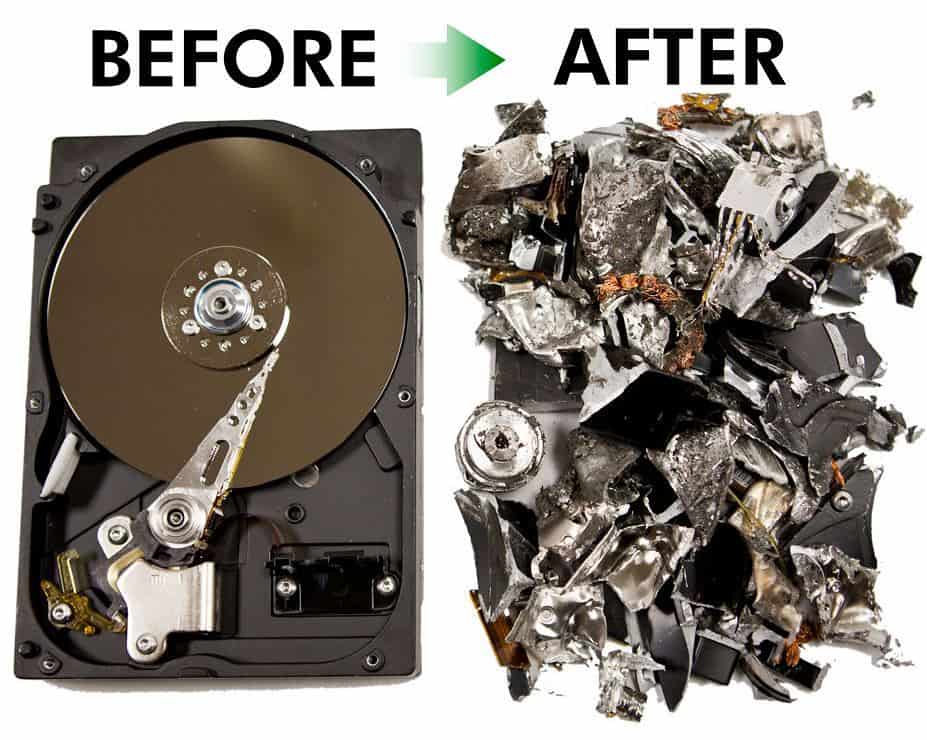Crucial Cyber Security Practices for Effective Data Destruction Approaches
Crucial Cyber Security Practices for Effective Data Destruction Approaches
Blog Article
The Essential Nature of Information Damage in Upholding Computer System Protection Solutions and Protecting Versus Unauthorized Gain Access To
In an era where information violations and identification theft are progressively prevalent, the value of effective information destruction can not be overemphasized. Organizations has to recognize that the failure to effectively get rid of sensitive details poses not only lawful and monetary dangers yet likewise a possible disintegration of client count on. Different techniques, from information cleaning to physical devastation, act as vital safeguards versus unapproved accessibility. Understanding the ramifications of data destruction methods and compliance with guidelines raises crucial questions about the adequacy of present approaches and their lasting stability in the face of evolving hazards.
Significance of Information Destruction
In a significantly digital world, the value of information devastation can not be overstated. As companies amass huge amounts of sensitive info, the possible repercussions of stopping working to effectively get rid of and handle of that data end up being significantly serious. Data breaches, identity burglary, and company reconnaissance present significant hazards, emphasizing the need of effective information damage practices.

Furthermore, as technology evolves, so too do the methods through which destructive actors seek to make use of delicate info. Organizations has to continue to be vigilant and aggressive in their data devastation strategies to guard against these progressing risks. By focusing on information damage, business not just safeguard their assets yet likewise foster depend on amongst stakeholders and clients, demonstrating a dedication to responsible data management and safety and security practices.
Methods of Effective Data Damage
To guarantee the complete and irreversible damage of sensitive data, organizations can use a variety of effective techniques tailored to their specific needs. One of the most common approaches is data cleaning, which involves utilizing specialized software to overwrite existing information numerous times, making healing practically difficult. This is particularly helpful for disk drives and solid-state drives, where standard deletion approaches are inadequate.
One more efficient strategy is degaussing, which uses solid magnetic areas to disrupt the magnetic domain names on storage space media, providing the information irretrievable. This method is especially matched for magnetic storage gadgets, such as disk drive and hard drives.
Physical damage is additionally a viable alternative, including the shredding, squashing, or incineration of storage space tools. This approach guarantees that data can not be recuperated, making it optimal for organizations taking care of highly sensitive details.

Conformity With Data Protection Rules
Organizations have to not just concentrate on efficient information devastation methods yet also make sure compliance with data protection guidelines that regulate just how delicate information is dealt with and taken care of. Abiding by these policies is vital for guarding personal information and maintaining client trust. Rules such as the General Information Protection Policy (GDPR) in the European Union and the Wellness Insurance Coverage Portability and Accountability Act (HIPAA) in the United States impose stringent guidelines on data administration, that include needs for the protected disposal of delicate information.
To attain conformity, organizations must execute thorough information destruction plans that align with these legal structures. This includes determining information that needs destruction, developing methods for secure methodsâEUR" such as shredding physical media or utilizing software application that satisfies market standards for data wipingâEUR" and keeping in-depth documents of destruction activities. Normal audits should be carried out to ensure adherence to these policies and to determine any kind of potential locations for renovation.
Failing to comply with information security policies can cause considerable legal ramifications, including hefty fines and damage to a company's reputation. Incorporating compliance right into information damage techniques is not just a lawful commitment but also an essential component of a durable info protection strategy.
Consequences of Poor Data Handling
Poor data handling can cause serious effects that prolong past immediate operational click resources obstacles. Organizations might deal with substantial economic losses due to information breaches, which usually lead to expensive remediation initiatives, lawful charges, and regulatory fines. These economic ramifications can strain resources and prevent growth, ultimately influencing an organization's profits.
Additionally, poor data handling can significantly damage a company's track record. Stakeholders, clients, and companions might lose count on an entity that falls short to shield delicate details, resulting in lowered customer loyalty and possible loss of business opportunities. This disintegration of count on can take years to restore, if it can be restored in all.
Additionally, organizations can encounter legal implications occurring from non-compliance with data defense policies. Such violations may result in investigations and penalties, worsening the financial problem and additional tarnishing the organization's picture.
In the world of cybersecurity, insufficient data monitoring methods can produce susceptabilities that make systems more prone to unauthorized access and cyberattacks. Eventually, these consequences highlight the important significance of executing durable information handling treatments to safeguard delicate details and keep organizational stability.
Best Practices for Secure Data Disposal


First of all, data must be identified according to its level of sensitivity. Delicate information needs much more extensive disposal methods, such as shredding physical documents and utilizing innovative software application for digital data wiping. Employing certified data devastation solutions ensures conformity with sector regulations and standards.
Second of all, organizations ought to carry out an information disposal plan that mandates normal audits. This policy must describe the treatments for information retention and devastation, guaranteeing that out-of-date data is disposed of promptly and securely. Educating staff members on these procedures is important to cultivating a society of security recognition.
Finally, keeping detailed records of disposed information boosts accountability and supplies a clear audit path. This documents ought to consist of the sort of data destroyed, the method made use of, and the day of disposal.
Conclusion
Finally, the imperative of efficient data damage is apparent in its role in boosting Discover More Here computer safety solutions and mitigating unauthorized accessibility risks. Adopting robust methods such as information cleaning, degaussing, and physical destruction, along with conformity with laws like GDPR and HIPAA, is necessary for safeguarding delicate info. Overlooking correct information disposal techniques can lead to severe effects, consisting of information breaches and legal consequences. Applying best practices in protected information disposal inevitably fortifies business stability and customer trust fund.
In a period where data breaches and identification burglary are increasingly widespread, the value of effective information destruction can not be overstated. data destruction. Data violations, identification burglary, and business espionage present substantial hazards, emphasizing the requirement of reliable data devastation techniques
Compliance with regulations such as GDPR and HIPAA requireds that companies implement rigid data security procedures, including the protected damage of data at the end of its visit here lifecycle.
By focusing on information devastation, firms not only secure their assets however also foster trust among clients and stakeholders, showing a dedication to accountable information management and safety practices.
Organizations have to not just focus on efficient data damage methods however also ensure compliance with information defense laws that regulate how sensitive details is managed and disposed of.
Report this page